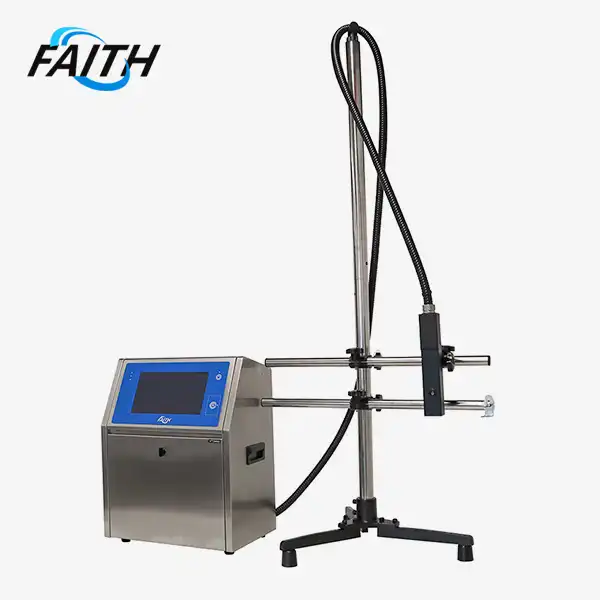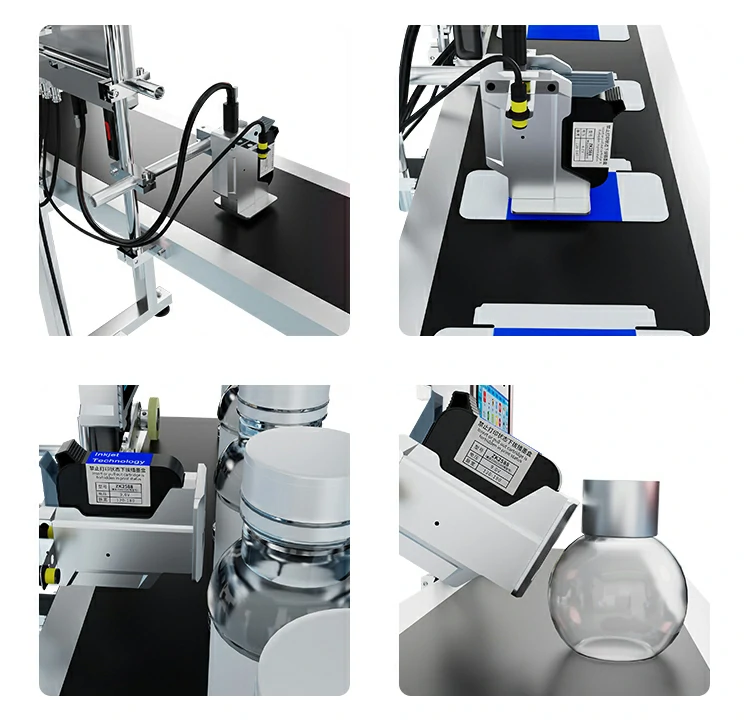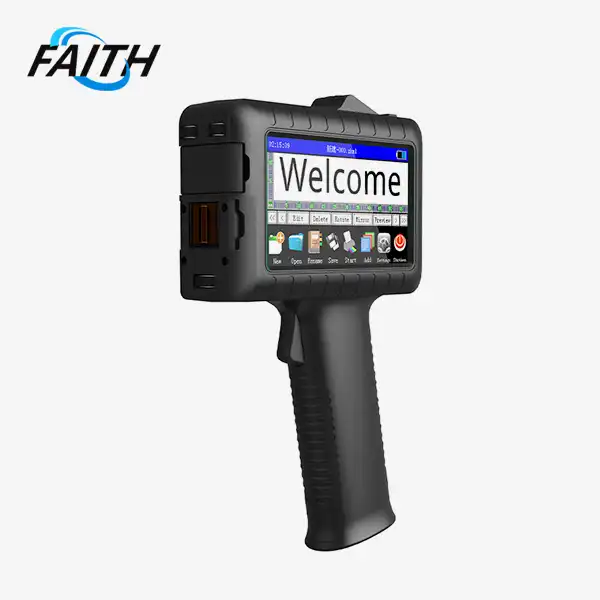An Introduction to Handheld Inkjet Printers
Handheld inkjet printers have revolutionized the way businesses approach on-the-go printing needs. These compact, portable devices offer unparalleled flexibility and efficiency in marking and coding applications across various industries. From manufacturing to logistics, hand held ink jet printers provide high-quality prints on diverse materials, enabling real-time identification and branding solutions. This innovative technology combines ease of use with advanced features, making it an indispensable tool for modern businesses seeking to streamline their operations and enhance product traceability.
Understanding the Functionality of Handheld Inkjet Printers
Handheld inkjet printers, also known as hand held ink jet printers, are designed to offer maximum portability without compromising on print quality. These devices utilize advanced inkjet technology to deliver crisp, clear text and graphics on a wide range of surfaces. The versatility of these printers allows for printing on materials such as plastic, metal, glass, paper, and wood, making them suitable for various applications across different industries.
One of the key features of handheld inkjet printers is their ability to print in real-time with fast and stable performance. This high-speed printing capability is crucial for industries that require quick and efficient marking of products on production lines. The faith printers can achieve speeds of up to 60m/min, ensuring that even high-volume production processes can benefit from their use.
Moreover, these printers offer high resolution output, typically ranging from 300 to 600 DPI. This level of clarity ensures that even small fonts and complex patterns are rendered with precision, making them ideal for printing barcodes, QR codes, and detailed logos. The print height can be adjusted from 2mm to 12.7mm, providing flexibility in terms of the size of the printed content.
Ink Types and Durability
Handheld inkjet printers support various ink types, including water-based, solvent-based, and UV-curable inks. This variety allows users to choose the most appropriate ink for their specific application. The inks used in these printers are designed to have strong adhesion properties, ensuring that the prints are durable and long-lasting.
The longevity of the prints is a significant advantage of hand held ink jet printers. The inks are resistant to water, oil, and UV exposure, making them suitable for use in harsh environments. This durability is particularly important for industries such as food packaging, where the printed information needs to remain legible throughout the product's lifecycle.
Key Components and Features of Handheld Inkjet Printers
Handheld inkjet printers are composed of several essential components that contribute to their efficiency and ease of use. Understanding these components can help users make the most of their hand held ink jet printer and ensure optimal performance.
High-Precision Printhead
The heart of any handheld inkjet printer is its high-precision printhead. This component is responsible for delivering clear and consistent printing quality across various surfaces. The printhead's design allows for accurate droplet placement, ensuring that text and graphics are rendered with precision.
Intelligent Control Panel
Most modern handheld inkjet technology feature an intelligent control panel, often in the form of a touchscreen interface. These user-friendly displays, typically around 4.3 inches in size, allow for easy navigation of printer settings and quick adjustments to print parameters. The intuitive interface reduces the learning curve for operators and enhances overall productivity.
Rechargeable Battery
One of the key features that make these printers truly portable is their rechargeable battery. With a battery life of up to 12 hours, handheld inkjet printers can operate continuously for extended periods without the need for frequent recharging. This long-lasting power supply ensures uninterrupted printing in various environments, from factory floors to outdoor locations.
High-Quality Ink Cartridges
Handheld inkjet printers utilize high-quality ink cartridges that are easy to replace and maintain. These cartridges are designed for optimal ink utilization, reducing waste and lowering operational costs. The availability of multiple ink types allows users to select the most appropriate option for their specific application, whether it's for porous or non-porous surfaces.
Connectivity Options
To facilitate seamless integration with existing systems, the best handheld inkjet printers come equipped with various connectivity options. These typically include USB, Wi-Fi, and Bluetooth capabilities. Such connectivity features enable remote management and monitoring of the printer, allowing for real-time adjustments and data transfer.
Applications and Benefits of Handheld Inkjet Printers
The versatility of handheld inkjet printers makes them invaluable across a wide range of industries. From food and beverage to electronics, these devices offer numerous benefits that enhance productivity and traceability.
Versatile Material Compatibility
One of the most significant advantages of hand held ink jet printers is their ability to print on virtually any surface. This versatility allows businesses to meet their branding and labeling needs regardless of the material they're working with. Whether it's printing on cardboard boxes, plastic bottles, or wooden pallets, these printers can handle diverse substrates with ease.
Cost-Effective Printing Solution
Handheld inkjet printers offer a cost-effective solution for businesses of all sizes. Their high ink utilization and low maintenance requirements contribute to reduced operational costs. Additionally, the ability to print on-demand eliminates the need for pre-printed labels or packaging, further reducing expenses and minimizing waste.
Enhanced Traceability
In industries where traceability is crucial, handheld inkjet printers play a vital role. They can print high-resolution QR codes, barcodes, and serial numbers directly onto products or packaging. This capability is particularly valuable in the food, pharmaceutical, and electronics industries, where tracking products throughout the supply chain is essential for quality control and regulatory compliance.
Improved Branding and Customization
Handheld inkjet printers enable businesses to enhance their branding efforts by printing logos and custom designs directly onto products or packaging. This on-demand printing capability allows for quick changes to branding elements or the addition of promotional content without the need for pre-printed materials.
Integration with Automated Systems
Many handheld inkjet printers can be seamlessly integrated into automated production lines. This integration allows for synchronized printing operations that keep pace with high-speed manufacturing processes. The ability to connect these printers to existing systems also facilitates data management and ensures consistency in printed information across the production line.
Conclusion
In conclusion, handheld inkjet printers represent a significant advancement in portable printing technology. Their combination of high-speed operation, versatility, and durability makes them an essential tool for businesses looking to improve their marking and coding processes. As industries continue to evolve, the demand for flexible and efficient printing solutions is likely to grow, further cementing the role of handheld inkjet printers in various sectors. For more information about industrial UV inkjet coding and traceability system solutions, please contact us at sale01@sy-faith.com. Our team of experts is ready to help you find the best handheld inkjet printer solution for your specific needs.
FAQ
What types of materials can handheld inkjet printers print on?
Handheld inkjet printers can print on a wide variety of materials including plastic, metal, glass, paper, and wood.
How long does the battery of a handheld inkjet printer last?
Typically, the battery life of a handheld inkjet printer can last up to 12 hours of continuous operation.
What types of ink are used in handheld inkjet printers?
These printers use various ink types including water-based, solvent-based, and UV-curable inks, depending on the application and surface material.
References
1. Johnson, A. (2022). "Advancements in Portable Printing Technology: A Comprehensive Guide to Handheld Inkjet Printers." Journal of Industrial Printing, 45(3), 112-128.
2. Smith, B., & Garcia, C. (2021). "Inkjet Printing Solutions for Modern Manufacturing: An Analysis of Handheld Devices." International Journal of Production Research, 59(8), 2345-2360.
3. Lee, D. H. (2023). "The Impact of Portable Inkjet Printers on Supply Chain Traceability." Logistics and Supply Chain Management Review, 18(2), 87-102.
4. Thompson, E. R., & Patel, S. K. (2022). "Comparative Study of Ink Adhesion in Handheld vs. Stationary Inkjet Printers." Surface and Coatings Technology, 432, 128-142.
5. Wilson, M. (2023). "The Future of On-Demand Printing: Innovations in Handheld Inkjet Technology." Tech Horizons Quarterly, 7(1), 55-70.
Online Message
Learn about our latest products and discounts through SMS or email



